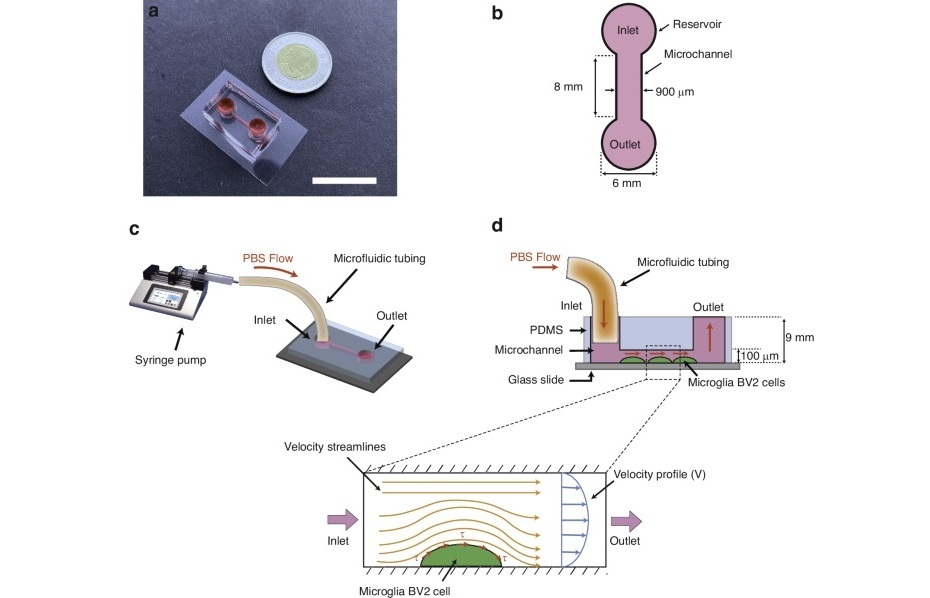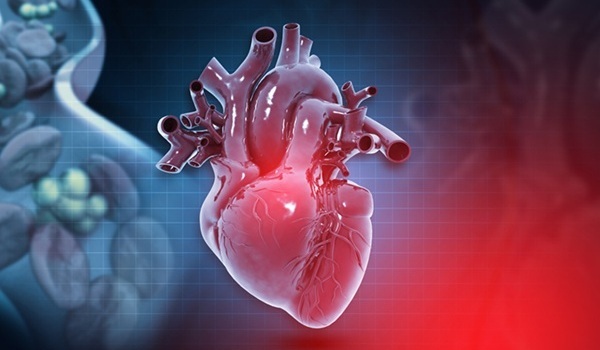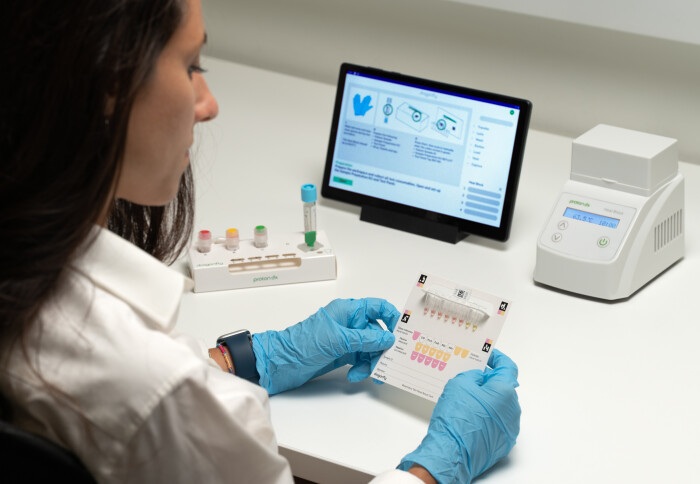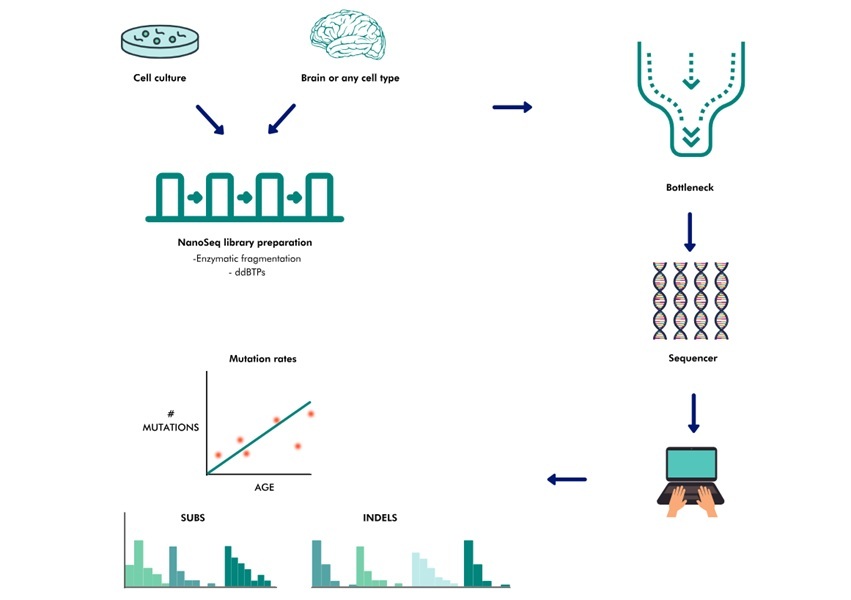Finger Stick Blood Test Detects Early Signs of Heart Attack Before it Occurs
|
By LabMedica International staff writers Posted on 21 Jun 2022 |

Heart attacks and strokes are the world’s leading cause of death. Many are caused by blood clots that block the flow of blood to the heart, often in at-risk individuals without any physical warning. However, long before a heart attack or stroke occurs, tiny changes in the blood begin taking place. Often, blood flow is disturbed, leading to blood clotting and inflammation which can block blood vessels. Now, researchers are developing a biomedical micro-device to detect these subtle platelet changes before a heart attack or stroke takes place.
Using a pin-prick test, the micro-device developed by scientists at the University of Sydney (Sydney, Australia) would take a blood sample from a person’s finger. The sample would then be analyzed for platelet clotting and white cell inflammation responses, information that would be immediately processed by an external operating system. The scientists will undertake further engineering development for the microdevice, which is predicated on an integrated microfluidic chip. The team is also working to build highly sensitive computational fluid dynamics simulations to better understand the impact of mechanical forces that could lead to blood pooling and clots.
“How this device would work is that an at-risk person, for example, someone with heart disease, would use it daily. Using a finger prick test, the device would monitor their blood and alert them to any potentially dangerous changes. If a change was detected, they would need to present for more monitoring at a hospital," said Dr. Arnold Lining Ju, an award-winning biomedical engineer from the University of Sydney's Nano Institute and School of Biomedical Engineering.
Research assistant Laura Moldovan said that, historically, it has been difficult to predict when a heart attack or stroke might happen: “They appear to occur at random, sometimes without any physical symptoms, however in fact there are tiny physical changes that occur in the blood – the key to this device is being able to sensitively monitor these microscopic changes.”
Related Links:
University of Sydney
Latest Technology News
- Acoustofluidic Device to Transform Point-Of-Care sEV-Based Diagnostics
- AI Algorithm Assesses Progressive Decline in Kidney Function
- Taste-Based Influenza Test Could Replace Nasal Swabs with Chewing Gum
- 3D Micro-Printed Sensors to Advance On-Chip Biosensing for Early Disease Detection
- Hybrid Pipette Combines Manual Control with Fast Electronic Aliquoting
- Coral-Inspired Capsule Samples Hidden Bacteria from Small Intestine
- Rapid Diagnostic Technology Utilizes Breath Samples to Detect Lower Respiratory Tract Infections
- Graphene-Based Sensor Uses Breath Sample to Identify Diabetes and Prediabetes in Minutes
- Wireless Sweat Patch Could Be Used as Diagnostic Test for Cystic Fibrosis
- New Method Advances AI Reliability with Applications in Medical Diagnostics
Channels
Clinical Chemistry
view channel
VOCs Show Promise for Early Multi-Cancer Detection
Early cancer detection is critical to improving survival rates, but most current screening methods focus on individual cancer types and often involve invasive procedures. This makes it difficult to identify... Read more
Portable Raman Spectroscopy Offers Cost-Effective Kidney Disease Diagnosis at POC
Kidney disease is typically diagnosed through blood or urine tests, often when patients present with symptoms such as blood in urine, shortness of breath, or weight loss. While these tests are common,... Read moreMolecular Diagnostics
view channel
Portable Label-Free Device Tracks Alzheimer's Disease in Real Time
Alzheimer’s disease is marked by the accumulation of toxic protein fragments in the brain that damage nerve cells and impair memory. Detecting and tracking these early changes remains a major challenge,... Read more
Liquid Biopsy Test Enables Early Detection of ICI-Related Myocarditis
Cancer treatments have advanced significantly in recent years, but they can still trigger severe and sometimes fatal side effects. Immune checkpoint inhibitors (ICIs), which have transformed cancer therapy,... Read moreHematology
view channel
Viscoelastic Testing Could Improve Treatment of Maternal Hemorrhage
Postpartum hemorrhage, severe bleeding after childbirth, remains one of the leading causes of maternal mortality worldwide, yet many of these deaths are preventable. Standard care can be hindered by delays... Read more
Pioneering Model Measures Radiation Exposure in Blood for Precise Cancer Treatments
Scientists have long focused on protecting organs near tumors during radiotherapy, but blood — a vital, circulating tissue — has largely been excluded from dose calculations. Each blood cell passing through... Read more
Platelets Could Improve Early and Minimally Invasive Detection of Cancer
Platelets are widely recognized for their role in blood clotting and scab formation, but they also play a crucial role in immune defense by detecting pathogens and recruiting immune cells.... Read more
Portable and Disposable Device Obtains Platelet-Rich Plasma Without Complex Equipment
Platelet-rich plasma (PRP) plays a crucial role in regenerative medicine due to its ability to accelerate healing and repair tissue. However, obtaining PRP traditionally requires expensive centrifugation... Read moreImmunology
view channel
Blood Test Tracks Treatment Resistance in High-Grade Serous Ovarian Cancer
High-grade serous ovarian cancer (HGSOC) is often diagnosed at an advanced stage because it spreads microscopically throughout the abdomen, and although initial surgery and chemotherapy can work, most... Read more
Luminescent Probe Measures Immune Cell Activity in Real Time
The human immune system plays a vital role in defending against disease, but its activity must be precisely monitored to ensure effective treatment in cancer therapy, autoimmune disorders, and organ transplants.... Read more
Blood-Based Immune Cell Signatures Could Guide Treatment Decisions for Critically Ill Patients
When a patient enters the emergency department in critical condition, clinicians must rapidly decide whether the patient has an infection, whether it is bacterial or viral, and whether immediate treatment... Read moreMicrobiology
view channel
Fast Noninvasive Bedside Test Uses Sugar Fingerprint to Detect Fungal Infections
Candida bloodstream infections are a growing global health threat, causing an estimated 6 million cases and 3.8 million deaths annually. Hospitals are particularly vulnerable, as weakened patients after... Read more
Rapid Sepsis Diagnostic Device to Enable Personalized Critical Care for ICU Patients
Sepsis is a life-threatening condition that occurs when the body’s response to infection spirals out of control, damaging organs and leading to critical illness. Patients often arrive at intensive care... Read morePathology
view channel
AI Improves Cervical Cancer Screening in Low-Resource Settings
Access to cervical cancer screening in low- and middle-income countries remains limited, leaving many women without early detection for this life-threatening disease. The lack of access to laboratories,... Read more
New Multi-Omics Tool Illuminates Cancer Progression
Tracking how cancers evolve into more aggressive and therapy-resistant forms has long been a challenge for researchers. Many current tools can only capture limited genetic information from tumor samples,... Read moreTechnology
view channel
Acoustofluidic Device to Transform Point-Of-Care sEV-Based Diagnostics
Rapid and sensitive detection of small extracellular vesicles (sEVs)—key biomarkers in cancer and organ health monitoring—remains challenging due to the need for multiple preprocessing steps and bulky... Read more
AI Algorithm Assesses Progressive Decline in Kidney Function
Chronic kidney disease (CKD) affects more than 700 million people worldwide and remains a major global health challenge. The condition often progresses silently, and many patients remain undiagnosed until... Read more
Taste-Based Influenza Test Could Replace Nasal Swabs with Chewing Gum
Influenza is one of the most dangerous infectious diseases worldwide, claiming around half a million lives each year. What makes it particularly insidious is that flu viruses are contagious even before... Read more
3D Micro-Printed Sensors to Advance On-Chip Biosensing for Early Disease Detection
Early-stage disease diagnosis depends on the ability to detect biomarkers with exceptional sensitivity and precision. However, traditional biosensing technologies struggle with achieving this at the micro-scale,... Read moreIndustry
view channelHologic to be Acquired by Blackstone and TPG
Hologic (Marlborough, MA, USA) has entered into a definitive agreement to be acquired by funds managed by Blackstone (New York, NY, USA) and TPG (San Francisco, CA, USA) in a transaction valued at up to... Read more
Bio-Techne and Oxford Nanopore to Accelerate Development of Genetics Portfolio
Bio-Techne Corporation (Minneapolis, MN, USA) has expanded its agreement with Oxford Nanopore Technologies (Oxford, UK) to broaden Bio-Techne's ability to develop a portfolio of genetic products on Oxford... Read more
Terumo BCT and Hemex Health Collaborate to Improve Access to Testing for Hemoglobin Disorders
Millions of people worldwide living with sickle cell disease and other hemoglobin disorders experience delayed diagnosis and limited access to effective care, particularly in regions where testing is scarce.... Read more

















